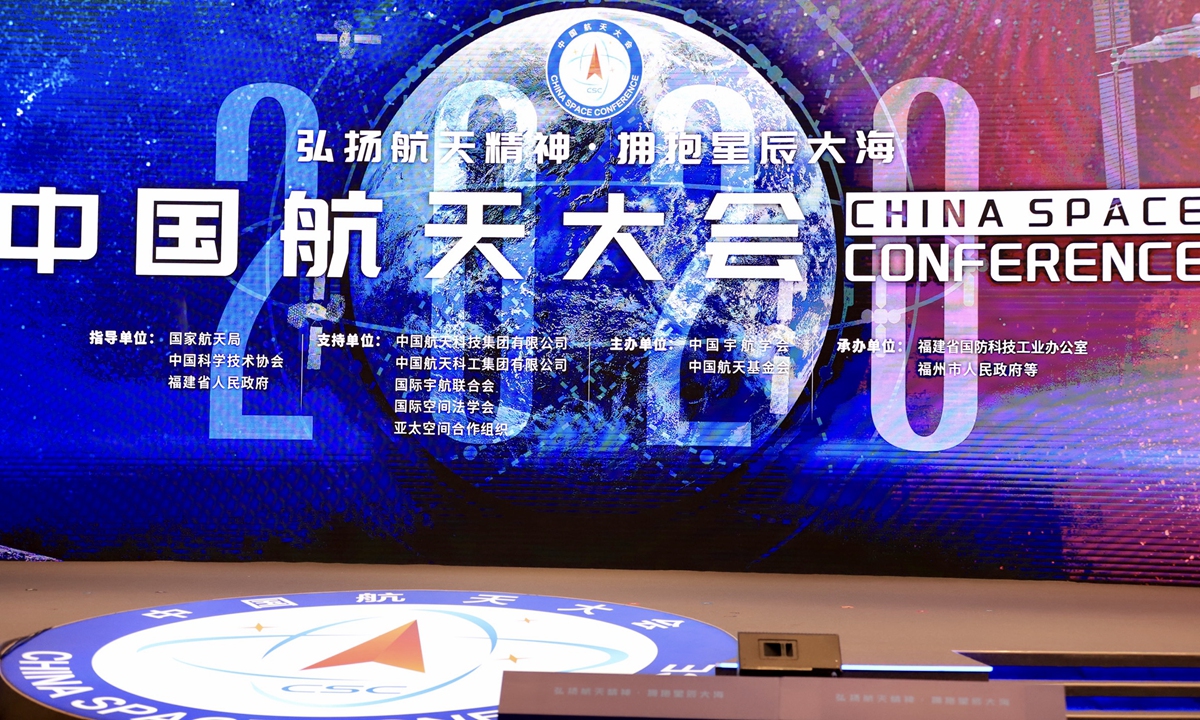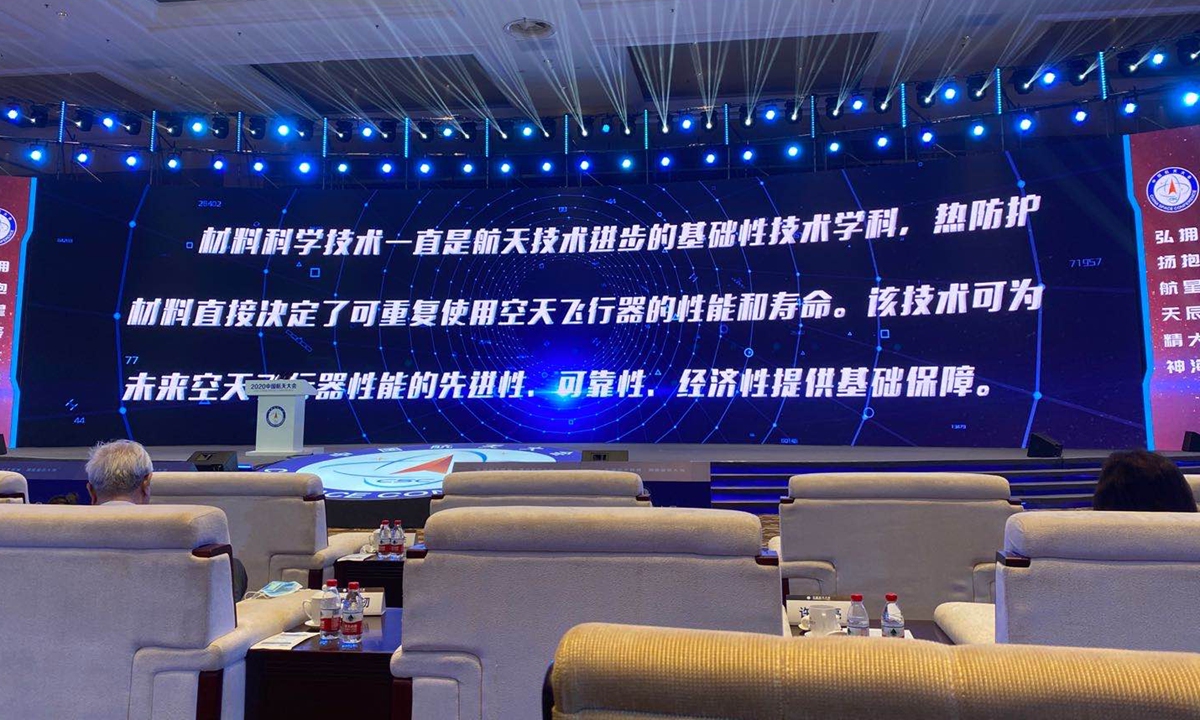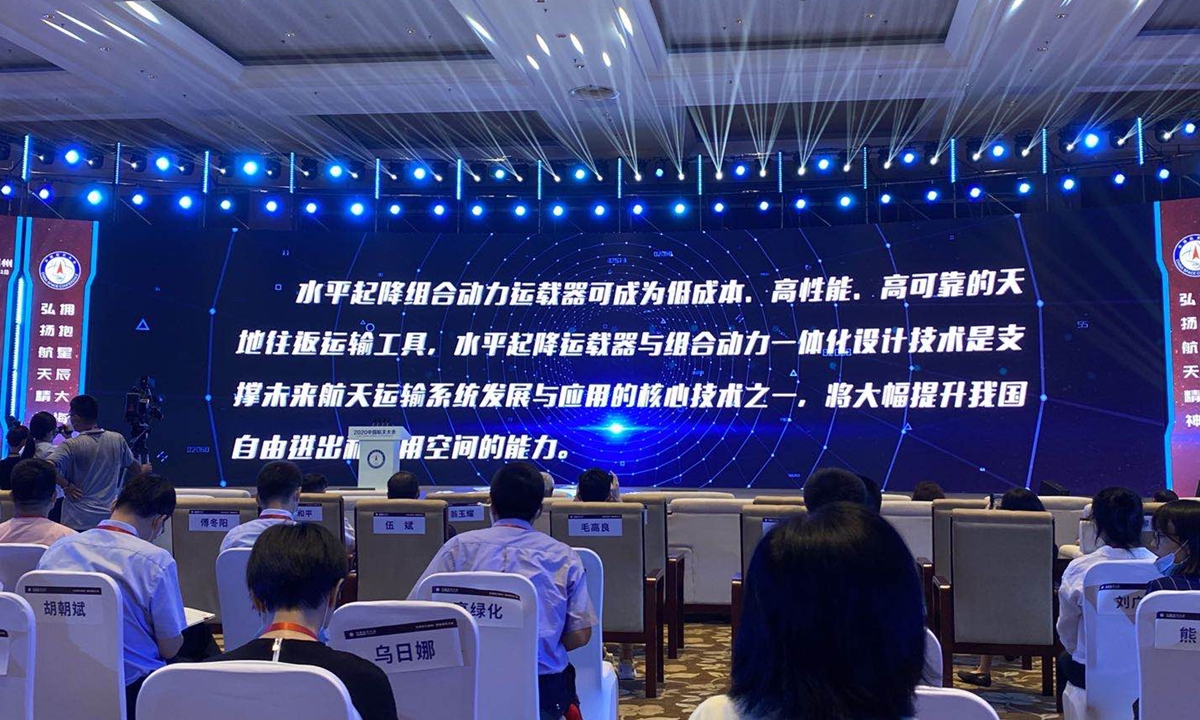Heat-resistant materials, power integration design among China’s astronomical research focuses
By Deng Xiaoci in Fuzhou Source: Global Times Published: 2020/9/18 13:00:17

Photo: Deng Xiaoci/GT
Study into heat-resistant materials for reusable aerospace vehicles and horizontal take-off and landing vehicle’s integration design with hybrid power have been named in the Top 10 “hot spot scientific issues and technical puzzles” for 2020 in the astronomical domain, coming only a few days after the safe return of China's new homegrown reusable spacecraft in early September, the Global Times learned on Friday at the China Space Conference.
The list of China’s scientific study directions was released on Friday at the event held in Fuzhou, East China’s Fujian Province by Wang Wei, an academician with the China Academy of Sciences and director of the research and department with China’s state-owned aerospace giant China Aerospace Science and Technology Cooperation.

Photo: Deng Xiaoci/GT
Heat resistant materials are a decisive factor in determining the capability and life expediency of a reusable aerospace vehicle, according to Wang, who stressed that breakthroughs on such materials would provide the foundation for the advancement, reliability and cost-friendliness of future aerospace vehicles.

Photo: Deng Xiaoci/GT
Level take-off and landing vehicles are expected to be a low-cost, highly capable and highly reliable transport solution for return trips to space. Studying the design for power integration with such vehicles is key to supporting the future development and application of the space-Earth shuttle system, which is expected to significantly enhance China’s capability to freely enter and exit from space.
China launched a reusable spacecraft on September 4 from the Jiuquan Satellite Launch Center using a Long March-2F launch vehicle. After two days of orbital flight, the vehicle made a safe landing on the designated site on September 6. However, no details on the spacecraft’s measurements – not even its name – have been made public so far.
Despite keeping a low profile, news of the reusable spacecraft gained a great deal of attention and led to speculation, with many, such as space.com, the New York-based source of space news, believing that the flight mission was related to China's space plane project.
Many foreign reports and Chinese netizens have been drawing comparisons between the unnamed vehicle – if it is a fixed wing space plane – and the X-37B space plane owned by the US Air Force.
Nuclear power spacecraft and engineering applications are also among the top topics, aiming to ease human exploration across the solar system.
RELATED ARTICLES:
Posted in: SOCIETY,CHINA FOCUS